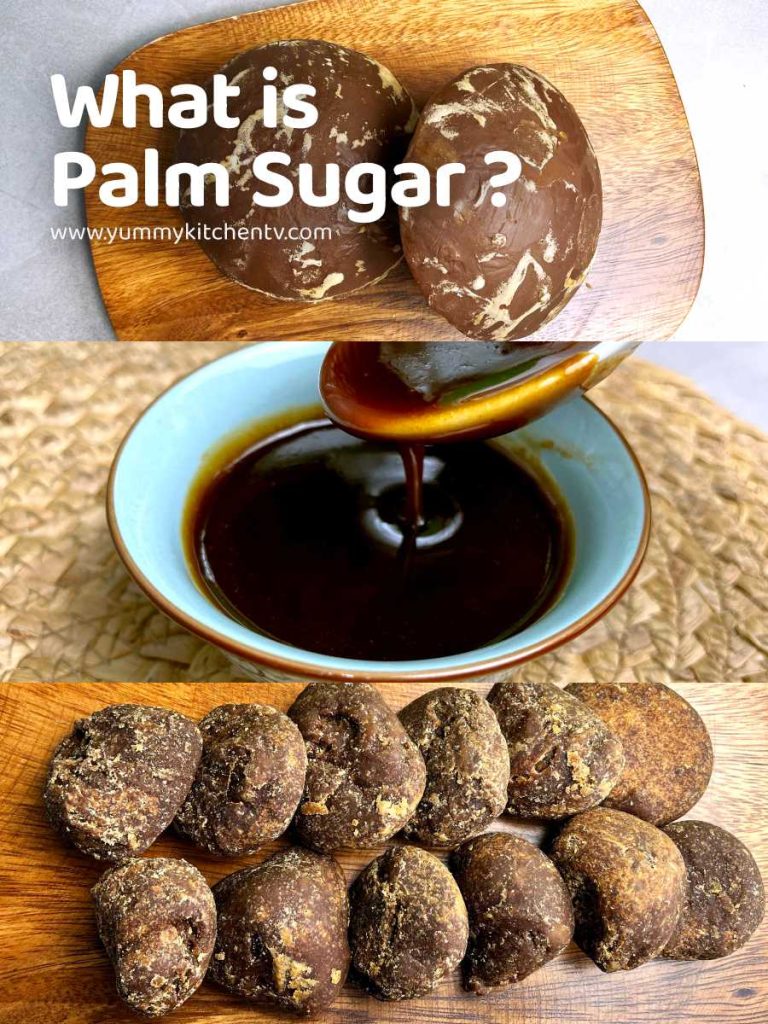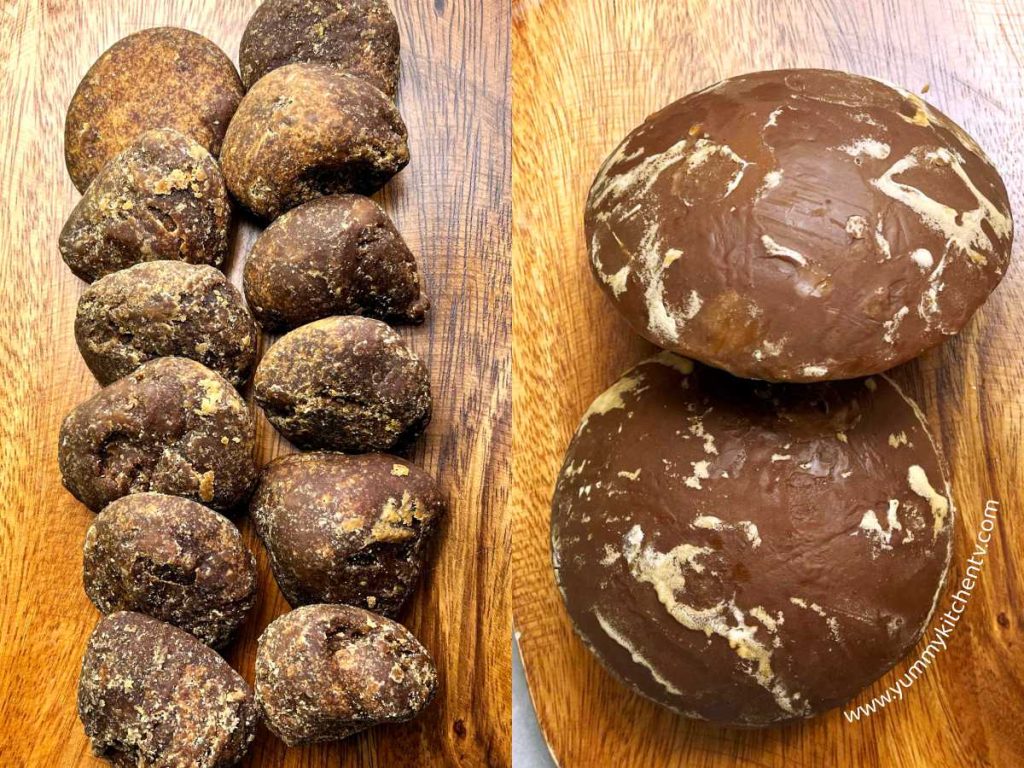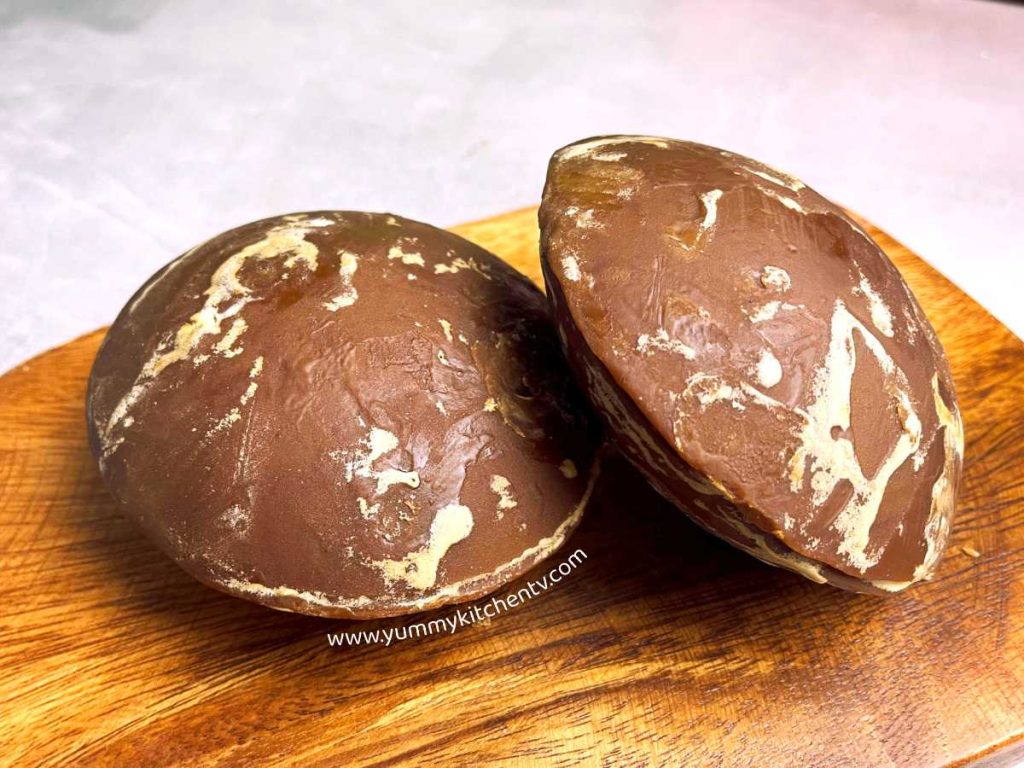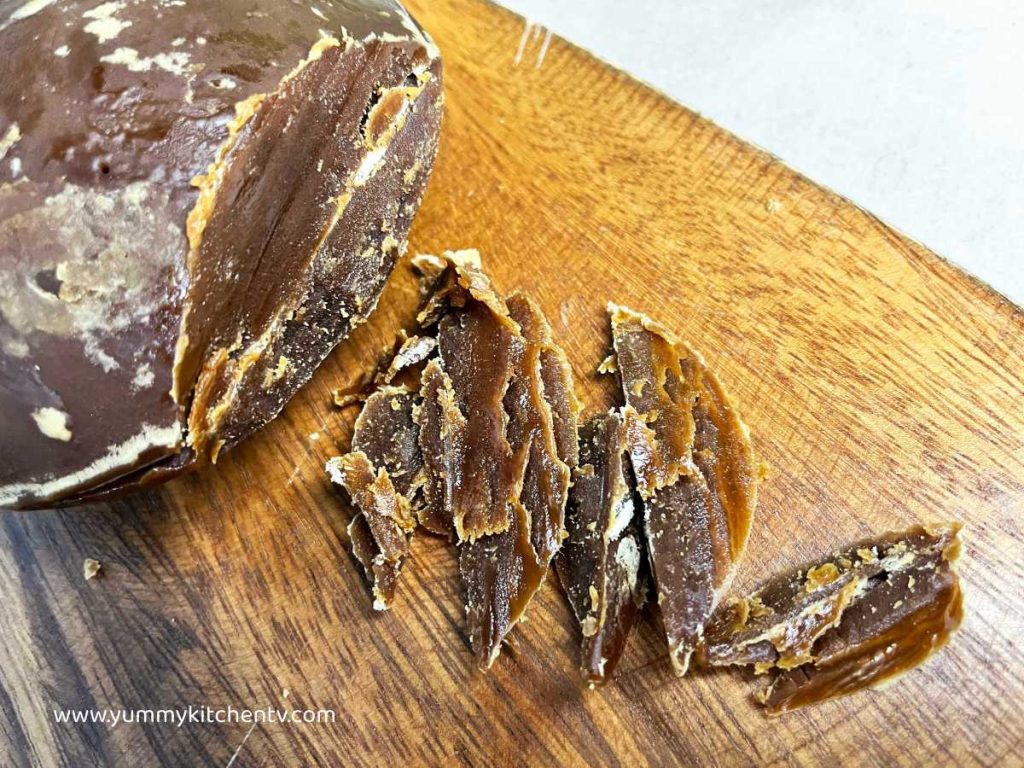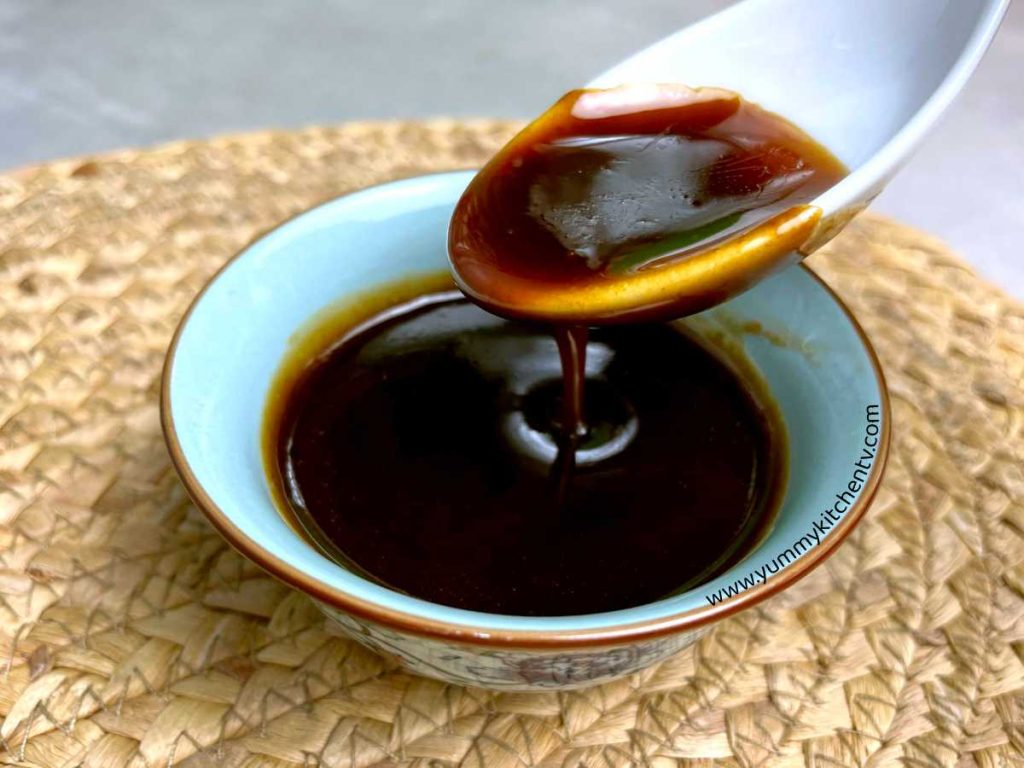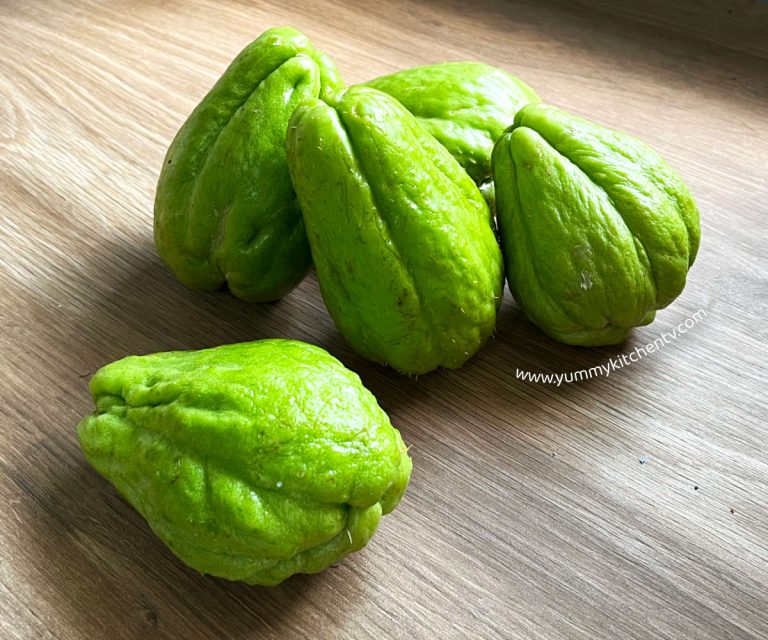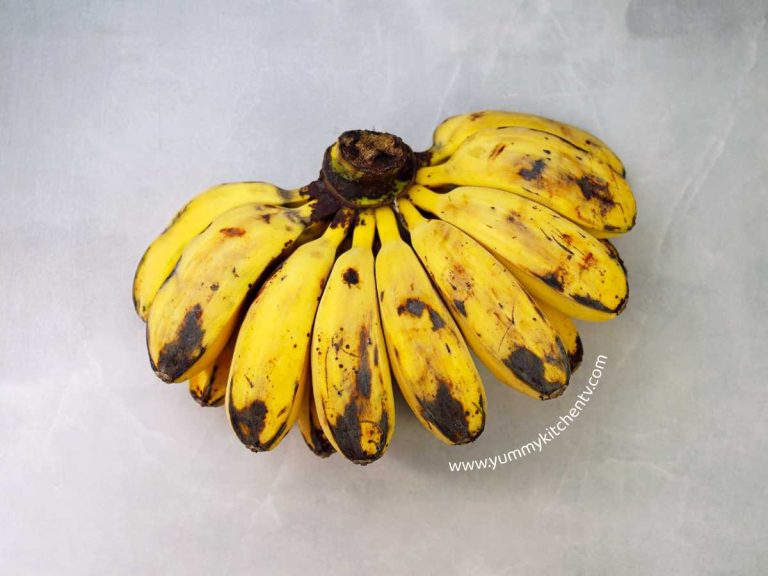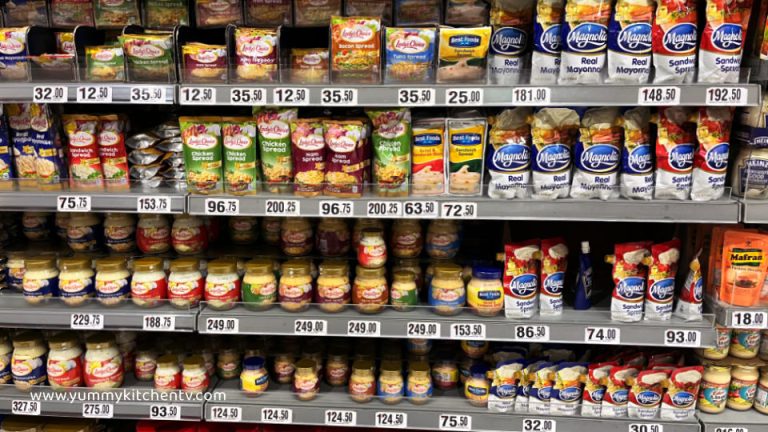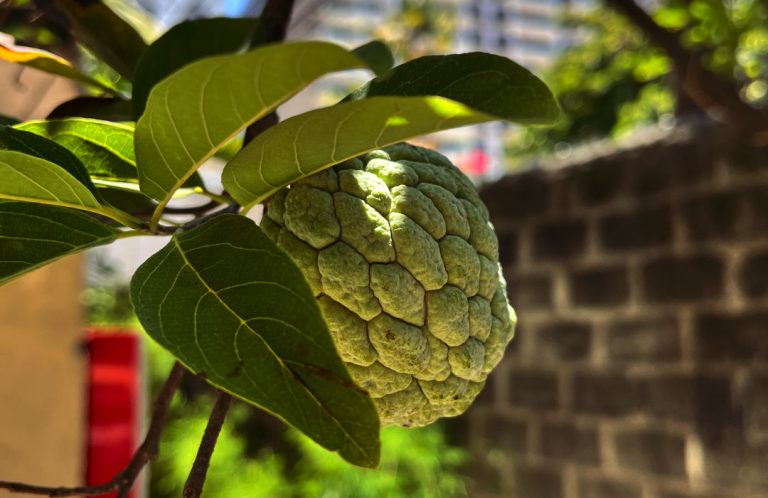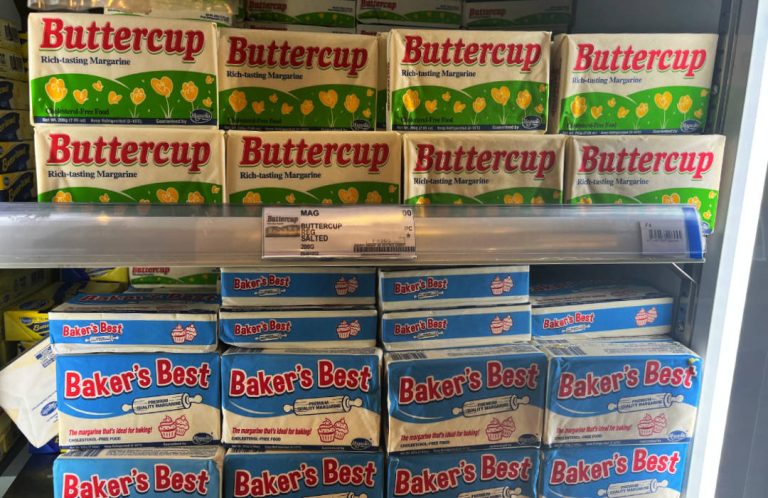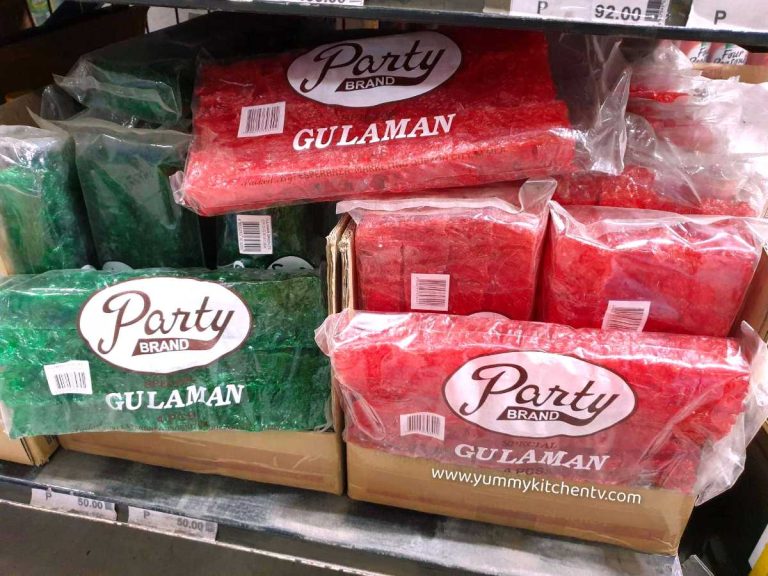Palm Sugar – A Natural Caramelised Sweetener
Palm sugar is a traditional or rather, a healthier alternative type of sweetener. Derived from the sap of any type of palm tree. The taste might also differ a bit depending on the type, like coconut, nipa, date, aren, or Plamyra palms. These are less sweet and have a mild caramel flavor, often seen as the healthier alternative to refined sugars and are mostly found in Southeast Asian cuisine. Used in traditional and more modern desserts, melted into a sauce, topping, and many more. This Sweetener also has a good amount of nutrients like potassium and iron. Read more to find out what benefits this sweet ingredient has.
A short Introduction
This type or palm-tree sugar is made from the sap from the stems or flowers of many palm trees; usually a mix of sago, date, coconut, and palmyra. Boiled down till it turns into a thick syrupy mass, leaving it as is, when left in liquid form, it’s called ‘palm syrup’. Or cooled at room temperature to harden into cake or brink like shapes. This results in an unrefined pale to dark brown-colored sugar, depending on how long it’s been cooked. It tastes sweet, but not as sweet as cane sugar, with hints of caramel. These come in solid and liquid form and are both used in sweet and savory dishes through Asia, North Africa, and the Middle East.
It was said to have originated from Indonesia, used long before the arrival of sugarcane. The process starts when the palm blossoms trees reach maturity between 8 to 12 years, the tappers climb up to a height of 30 meters, carefully using a well honed tapping technique while avoiding attacks of insects attracted to the sweet scent of the blossoms. A technique still used today. With the attraction of a better lifestyle, you can now find palm sugar distributed almost everywhere, some brands or factories that produce and sell this type of sugar are only made using one tree like coconut palms, which gives it its distinctive aftertaste. Where to buy palm sugar? You can find them in your local Asian groceries and dry markets in Asia, you can also buy this and any other sugars online.
Palm Sugar Benefits
Sugar is sugar, but Is palm sugar bad? Palm sugar calories count to 375 calories for a serving of 100 grams. Considered the healthier choice of sweetener for those with diabetes, because of the minimal processing without the added chemicals. But why is that so? Here are some of this sugar’s nutrition facts:
- Reduces risk factors of diabetes like insulin resistance. Compared to other sweeteners, these have a better source of nutrients when consumed in moderation. It contains less glucose and lower glycemic index than a table of honey or sugar.
- Stabilizes blood sugars better compared to other sweeteners. This also reduces heart strain.
- Promotes better digestion as these contain dietary fiber called ‘insulin’. Helps provide good bacteria to your gut and improves mineral absorption.
- Aids in bone health. These have manganese to reduce the risk of problems like osteoporosis.
- High in potassium, even higher than bananas and green vegetables (by weight). Needed by the body to maintain a well functioning nervous system.
- Helps manage blood pressure and prevents cell damage. These have ‘phytonutrient’, a plant-based compound with an antioxidant effect.
*But still use any type of sugar with caution. Too much sugar, whether introduced or labeled as healthy like this type of ‘tree’ sugar’ being classified as healthier than most, can still cause problems like diabetes, obesity, and some heart problems.
Palm Sugar Substitutes
While this type of sugar may be made from any type of palm tree, commonly used in Asian, North Africa, and Middle Eastern cuisine. It has a deep natural caramel flavor which makes it hard to replicate. Making some areas around the world make it hard to find in the market. While most sugars can be interchanged with other sugars, there are some differences from palm sugar to coconut sugar, brown sugar, cane sugar, and jaggery. Try these easy ‘do it yourself and/or optional alternatives to try:
- Palm sugar vs brown sugar – While this is the best choice and easiest to find, it is less intense in flavor and is sweeter than palm sweetener but in just a minute difference. Brown sugar has a higher 95% amount of sucrose with 5% of molasses while palm is made of 70% sucrose. Some substitute 1 cup of palm sugar with 1 cup of brown sugar plus a tablespoon of molasses.
- Molasses mixed with white sugar – if you don’t have any brown sugar on hand, mix 1 cup of white sugar with 2 or 3 tablespoons of molasses. The outcome is sweeter so do take note when using it as a replacement.
- Palm sugar vs coconut sugar – while there is such a thing as organic coconut palm sugar. Both are two different types of sweeteners. Palm sugar comes from palm trees, while coconut sugar is from tapping the flower sap of coconut trees. Coconut sugar has a butterscotch and coco-nutty aftertaste while the other has a smokier taste. Also, coconut sugar benefits are also more nutritious and differ quite a bit.
- Honey or Maple Syrup – liquified, adds more moisture and slightly less sweetness.
- Date Sugar – not to be confused with date palm sugar. These are made from grounded dehydrated dates till it resembles sugar. A good one on one replacement.
- Palm sugar vs cane sugar– palm sugar has a lower glycemic index making it healthier and less sweeter than cane sugar.
- Palm sugar vs jaggery – jaggery is mostly sugarcane and is sweeter but helps with digestion better than the latter sugar. But if you do have diabetes, palm sugar is the better sweetener of choice.
Palm sugar uses
This type of sugar can be used in many ways, to add in marinades which not only adds a deep almost caramel flavor but a light tint of color, in traditional dishes where these are used as filling, for pickling, soups, sauces, jams, or baking with type of sugar to make desserts. The usual way to enjoy this ‘healthy sugar’ is to use it in as many ways as you use regular sugar.
The Philippine’s favorite sugary topping
In the Philippines, especially in their dishes, you’ll notice the love of sweet tasting food. This doesn’t excuse even the traditional ‘kakanin’ or rice dishes. In which this sugar is used, for example; Biko, a Filipino sweet sticky rice cake with ‘latik’ which is a rich thick syrupy brown sauce covering the top layer of the rice cake. In taho, while not normally used as much in modern times, the ‘arnibal’ or ‘syrup’ used in these goods are can be made of this type of sugar. Suman, a traditional snack you can usually find sold at side stalls or streets are typically paired with a small plastic holding palm syrup, another snack the ‘ube kalamay‘, an ube flavored smooth rice cake topped with a sprinkle of caramel-like sugar, or thicken coconut cream, are also sold with a small packet of the syrup or latik and shredded coconut.
Palm Sugar recipes:
- How to melt palm sugar to make palm sugar syrup? Carefully chop or mash the sugar with a sharp knife and place into a microwavable bowl or pot at medium heat. Add in half (for a ratio of 2:1) of the water. Mix until melted or microwave until it melts. Mix often.
- Drizzle the syrup over kakanin dishes like Suman, Tupig, Palitaw, or use as a Cassava or Biko topping.
- Substitute sugars to make bread fillings like Pan de coco (bread filled with a desiccated coconut and sugar mix), Kamote Donuts (Sweet Potato donuts), Spanish Bread (Traditional sweet bread with a sweetened butter breadcrumb filling ).
- In baked goods to make Palm sugar cookies, oatmeal cookies, Bread Custard Pudding or Bread Pudding, or Filipino Hotcakes (Filipno version of America Pancakes).
- Mix into drinks like tablea, milk tea, or use this to make the simple and refreshing Buko ice candy, Mango Sago (mango Tapioca), or a delightfully cold Banana Caramel Ref Cake.
Many new varieties of sweeteners have been popping out of the market, from the usual brown, light brown, to white sugar, ‘organic’ palm sugar, jaggery and many more raw unrefined sugar titled as the ‘healthier choice’. While they are seen as the healthier option, one should note that sugar will still have the same effects as other sugars, and should be eaten in moderation. In turn, this article is to help distinguish and help you choose the sugar additive that suits your dish.
#PalmSugar #NaturalSweetener #HealthySugar #CaramelFlavor #SustainableSweetener #SoutheastAsianFlavors #FoodieFavorites #SweetAndHealthy #LowGlycemic #NutrientRich #CoconutSugar #SugarAlternatives


